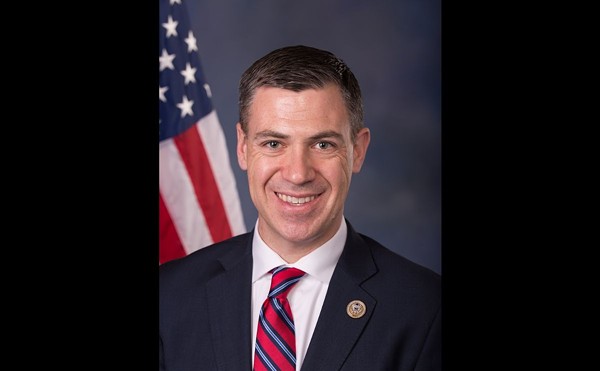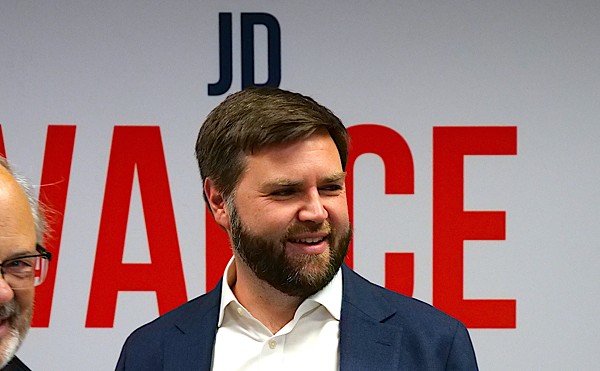C
incinnati’s beleaguered public school system, faced with a projected $43 million budget gap for next year, slashed 10 percent of its teaching staff April 17. In a special session, the school board voted unanimously to eliminate at least 237 jobs, saving the district around $20 million.
According to Mary Ronan, superintendent of Cincinnati Public Schools, the cuts were the only option the district had.
The teachers’ union, though, sees it quite differently.
Coming on the heels of last year’s cuts — CPS cut around 200 jobs in 2011, with 145 teaching positions eliminated — the latest slash is “just unfair,” says Julie Sellers, president of the Cincinnati Federation of Teachers.
“The district is trying to balance its budget on the backs of teachers,” Sellers says. “They didn’t look at the alternatives, which we’ve given them. They ignored them and went straight for the teachers. It’s unfair to the teachers, and it’s unfair to the students.”
At the heart of the dispute is a study the union presented to the CPS board before Easter in which its parent organization, the American Federation of Teachers (AFT), alleges the district is drastically overstating its expenses while underestimating its revenue.
The report, done at the behest of the union’s local chapter, details several ways in which CPS’s projections are inaccurate. In one item, the report takes issue with a $5 million fund the district reserves for catastrophic health insurance claims.
“That was one of the first things we noticed,” says Nancy Van Meter, who serves as deputy director of AFT’s research and information services department.
“We dug pretty deep, going back into the history of the schools, trying to see where it was shown that fund is needed. It isn’t. We asked them, and they could not provide any evidence or reason why it’s needed, like the rest of the points we raised. The district couldn’t tell us the formula they used to come up with any of their projections.”
The report also detailed five other instances where inaccurate projections have steadily increased the district’s deficit estimates over the past five years. When considered more realistically, the AFT says, the difference between CPS’s projections and reality is a $17.9 million increase in funds for the 2012-13 school year — enough to save nearly all of the jobs cut earlier this month.
“What we’re seeing, again, is poor judgment. They keep making cuts based on bad information,” Van Meter says. “If it’s something that we saw right away, why don’t they see it?”
The report, she adds, was the result of a yearlong examination of CPS forecasts, comparing the district’s projections to actual financial figures from the past five years.
While CPS’s budget projections look only at the operating budget, the AFT also looked at money the district is saving elsewhere, like abandoned construction projects — the district completed only 37 of a planned 58 construction projects funded by 2003’s $480 million bond issue approved by voters before canceling the rest.
The union still is awaiting a response to its report.
According to CPS spokesperson Janet Walsh, district staffers are studying the document, wanting to give it “thorough and methodical” attention before commenting. Early indications, she says, show nothing that make Tuesday’s cuts unnecessary.
“(Sellers) and AFT are focused, appropriately so, on the important role of teachers in education — they are the heart and soul of what we do,” Walsh says. “Yet, as a district, we have to act in a fiscally responsible way. We’re forced to err on the side of caution. We can’t have a budget go into the red, or everyone — students, teachers and the community — suffers.”
She and Ronan both point to a number of uncertainties inherent in budgeting for the next school year, and the need to make proactive moves.
“Everything is a ‘guesstimate,’” Ronan says.
Contractually, the district has to inform teachers whether they will be needed in September by the end of this month. If they don’t make cuts by then, the teachers’ contracts are automatically renewed for the 2012-13 school year and the district has to pay them. Also, with lawmakers still bickering over the state budget in Columbus, schools don’t know how much funding to expect from Ohio for next year.
Local funding is on the decline as well, Ronan adds.
“The city has the ability to abate property taxes, which it does. We’re still in litigation over $8 million in back property taxes it owes us over the Convention Center. The county is now keeping 1 percent of delinquent property taxes on foreclosed homes, and municipalities deal with their budget problems by dipping into funds that would otherwise go to the district,” she explains. “All these things are cannibalizing our funding. We’re the bottom of the food chain.”
Until the district has hard figures to base next year’s budget upon, it’s incumbent upon her to fear the worst, Ronan adds.
“We simply cannot spend every dime we take in. If something comes up and there’s no contingency fund, we’re operating in the red. That’s against the law,” she says.
Ronan also denies the union’s claim that teachers were the administration’s only target for cost-cutting.
“We looked at several options, but our largest expenditure is staff. Eighty-five percent of our budget is employee payments,” she says. Ronan also notes that, once more information is available, teachers may be hired back come September.
Sellers, for one, isn’t convinced. She says the district hasn’t made strategic cuts, merely across-the-board decisions based on faulty projections. Last year, she adds, none of the teachers who lost their jobs returned despite an overwhelming need. The union has filed several grievances in that regard.
What’s left is a tough situation for the remaining teachers. In the age of the Ohio Teacher Evaluation System — the incentive-based payment based on student performances — teachers will have to suffer classes containing different grade-level students and dwindling support. According to Sellers, that includes paying for things like photocopies out of their own pocket so students can have the materials they need.
“And the teachers do it,” she adds, “because they care.”
View the actual AFT Report here.






